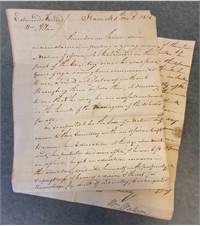
Since working with the archives on an article about his life, I’ve been fascinated by the life of Thomas Jenkins – Britain’s ‘first black teacher’ – and his connection to Brunel and its founding colleges.
I particularly like this letter from William Watson, a Scottish Quaker who knew Thomas, although his references to overcoming prejudice only hint at Thomas’s amazing, film-worthy story.
Thought to be the son of an African chief, Thomas was taken to Scotland at a young age to be educated. Although not much is known about his upbringing, he clearly made an impression, as in his late teens or early twenties, his neighbours, in defiance of the local church, founded a school and installed Thomas as the schoolmaster.
He later went on to have a successful teaching career in London – where he studied at Borough Road College, one of Brunel’s founding colleges – before living out his later years helping to set up schools in the colony of Mauritius.
I’m so glad that even at the time there were people that recognised Thomas as being interesting and noteworthy, and made an effort to document his life. Whilst our glimpses into his life are quite fleeting, they tell of someone who overcame the challenges thrown at them as they wrote their name into the history books of two continents.
Tim Pilgrim, Senior Media Relations Officer, Marketing and Communications